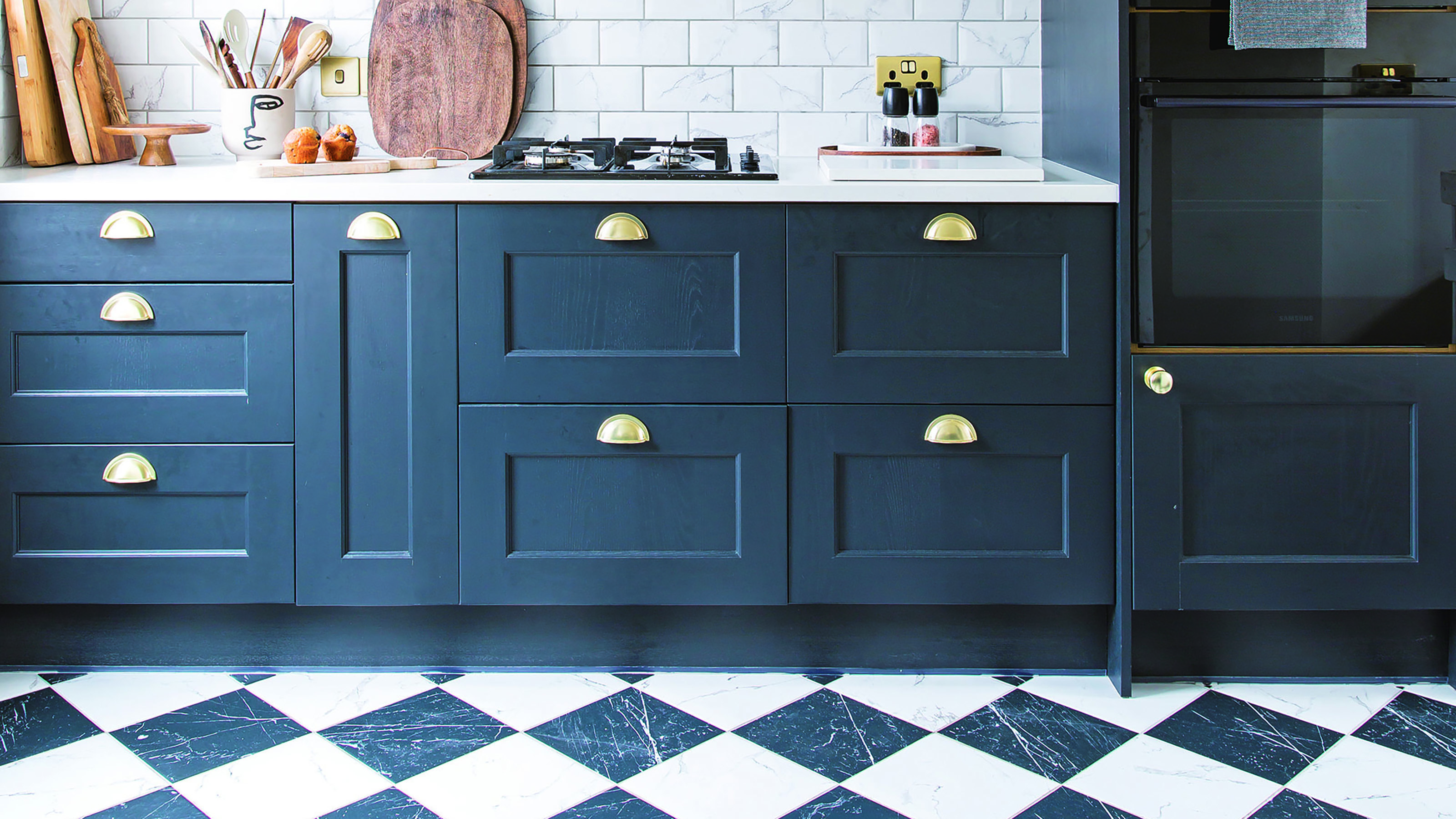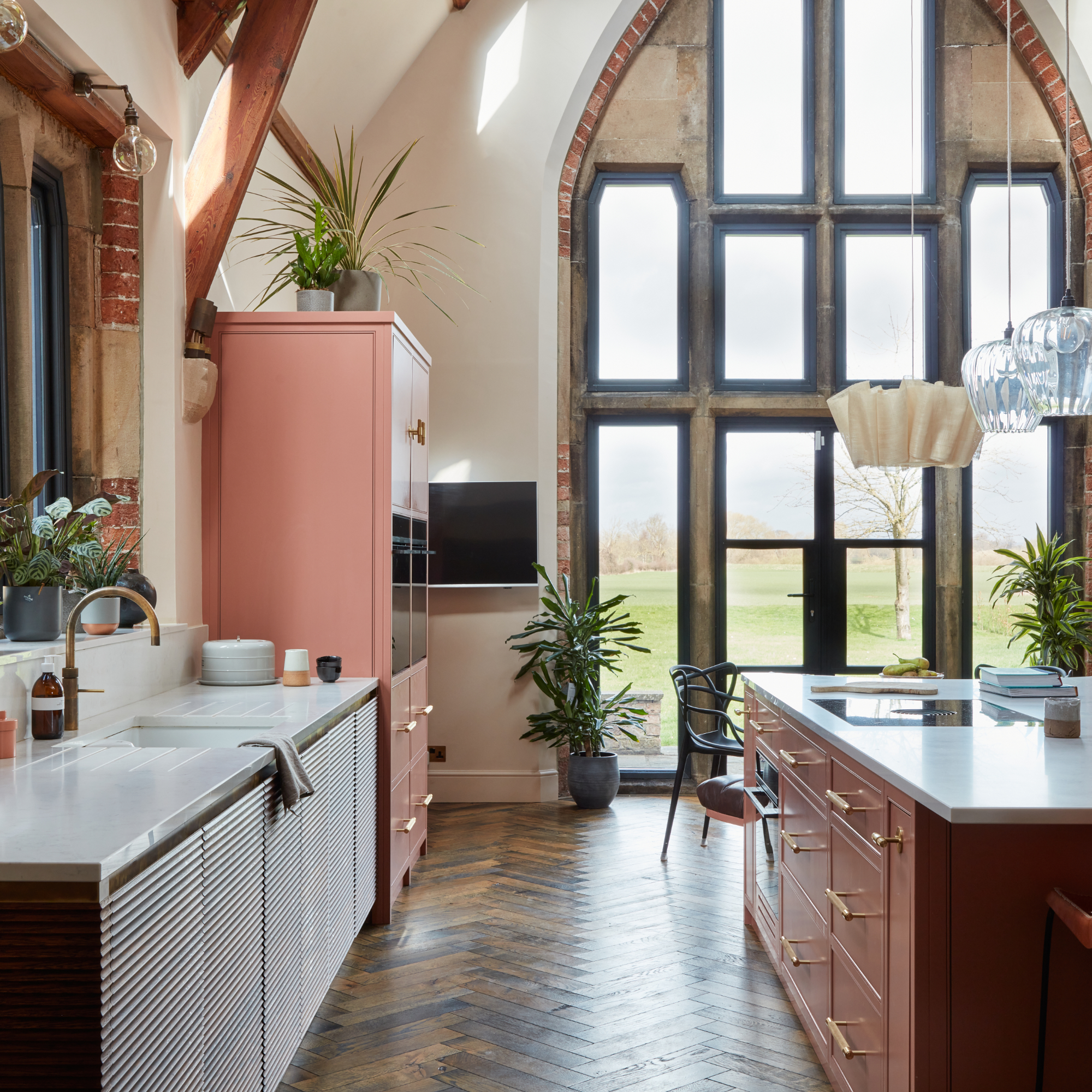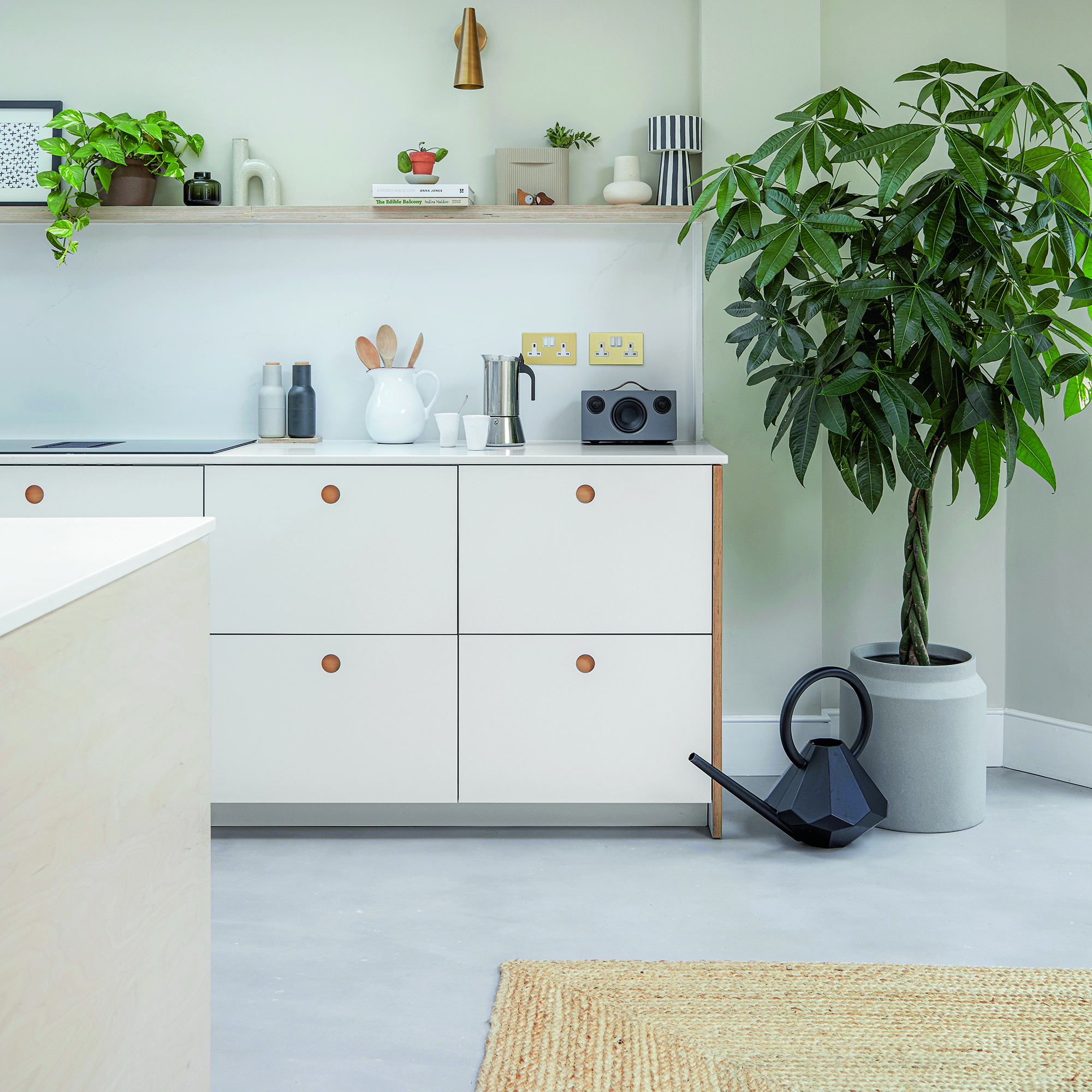The best floor colours to make a small kitchen look bigger - experts say these are the shades to go for
Kitchen colour choice isn’t just about the walls and units – the floor could be the ideal place to inject a new shade (or pattern) too


Need to know the best floor colours to use in a small kitchen? Just because your space is petite, doesn’t mean the floor has to be boring. While it may be tempting to go plain and simple to enhance the feeling of light and space (and there’s nothing wrong with that), if you want a bit more oomph, knowing the best floor colours to use in conjunction with wall colours for small kitchens will add interest and enhance the sense of space.
Kitchens are the hard-working heart of every home, so practicality is key. But the kitchen flooring ideas have to work with the rest of the room too, including the style and colour of your kitchen units. Aim to get a good balance between the floor, cabinetry and wall colour for a kitchen scheme that works in harmony.
Best floor colours for a small kitchen
‘It’s best to consider which element will form the visual focus,’ explains Gavin Smith, marketing director at Karndean Designflooring.
‘For example, a herringbone, chevron or abstract patterned floor can create an interesting foundation, with a complementary cool, neutral or warm colour palette on walls and units to create a soothing balance. Alternatively, where the units make a statement or other key elements such as marble worktops are the focal point, a more subtle flooring with less pattern will allow these elements to take centre stage.’
To help you decide what will work in your space, we’ve asked the kitchen flooring experts for their tips on choosing the best floor colours for a small kitchen. This is what they had to say…
1. Light floor colours

‘If you’re decorating a smaller space, opt for lighter colours, as it will help to make a kitchen appear bigger and brighter’ says Carly Greening, creative product manager at The Floor Room. ‘It also helps to bounce natural and artificial light around the room, visually enlarging the space.’
‘Light coloured luxury vinyl in soft beige, cream or taupe can mimic the appearance of natural materials, while providing easy maintenance and longevity,’ she adds.
Get the Ideal Home Newsletter
Sign up to our newsletter for style and decor inspiration, house makeovers, project advice and more.
Consider the amount of natural light in your small kitchen. If there’s lots, you can afford to go for cooler tones but if your kitchen only has a small window or none, pale but warmer shades will help make a small kitchen look bigger. Light wooden flooring is a good option, or you could look for porcelain tiles that replicate the look of wood or warm stone, or easy-to-instal click-fit laminate options.
‘One of my favourite tricks is to opt for designs that create fewer seams or grout lines, which works well when using light wood-effect planks. The soft shades and light wood knots and grains blend beautifully together, particularly when used within open-plan layouts, creating a sense of continuity,’ says Carly.
2. Dark coloured flooring

While, generally speaking, a less is more approach works well in a small kitchen, don’t feel afraid to go bold. Sometimes a statement shade is just the colour trick you need to make a small kitchen look bigger.
‘The secret to success is getting the different components of a kitchen working together with complementary colours, patterns and textures,’ says Gavin. ‘It might be assumed that a dark flooring would restrict a small kitchen but in fact using a bold colour across all surfaces can work extremely well and create a cosy mood. For example, walls and units washed in a dark colour will look sumptuous against a rich aged wood or charcoal stone design.’
Do think about the natural light in your space, as well as the artificial kitchen lighting ideas you put in there. It’s important to balance a darker floor with good illumination throughout the day as the darker the floor, the more light it will absorb rather than reflect. The last thing you want is for your kitchen to feel dimmer and smaller.
‘But of course, there’s dark and then there’s dark,’ says Abbas. ‘A jet black Nero Marquina effect tile will offer a completely different effect to a dark grey wood plank tile, which could in fact elongate the room.’
A dark floor in a small kitchen could also allow lighter-coloured furniture to stand out, plus is great for hiding imperfections and a little dirt, making it ideal for family homes.
3. Grey flooring for small kitchens

‘In a room blessed with optimum sunlight, a design with cooler grey undertones can enhance a neutral or playful colour palette,’ says Gavin. You’ll be able to find such shades in a variety of materials including wood, stone, porcelain, vinyl and laminate.
Pale grey flooring will keep the kitchen light and airy and is ideal if you prefer a contemporary style.
Want to make the room feel even more spacious? ‘Match your grout to the colour of your kitchen tile ideas,’ says Abbas. ‘This works particularly well with modern rectified tiles. Their precise edges allow for smaller grout joints between the tiles. This removes visual distraction, making the floor feel like one seamless finish.’
4. Patterned flooring in a small kitchen

There are two key things to remember when introducing pattern to a small space: get the scale of the pattern right for the size of your kitchen and don’t combine too many different colours or busy patterns which can cause visual clutter.
‘Consider medium to small-scale patterns that are more proportionate to the size of the room,’ explains Carly. ‘Luxury vinyl, in particular, is available in a wide variety of patterns as well as being durable and easy to clean, making it ideal for kitchen floors. From classic checkerboard designs to Moroccan-inspired motifs, there are now options for every style of interior.’
Abbas adds: ‘You could opt for a Victorian-style checkerboard floor, or even a terrazzo tile, to make your floor pop without feeling too busy.’
Pattern can also come from the way you lay your chosen floor.
‘The orientation of flooring can create an illusion of space by accentuating either the width or length of a room, while a diagonal pattern will trick the eye into thinking the room is bigger,’ explains Gavin.
‘Where a herringbone or chevron pattern is desired, a traditional 9” x 3” parquet tile, 18” x 3” herringbone or 17" x 3.5" chevron would be ideal for a small kitchen. Many people are also looking to geometric patterns to create a sense of depth and drama or to disguise an awkward-shaped room,’ he says.
FAQs
What flooring is suitable for kitchens?
Hard floors tend to work best in a kitchen. Consider wooden or laminate, stone or porcelain tiles, vinyl or other materials such as polished concrete or resins, which will create a very sleek, contemporary look.
The good news is that there are hundreds, if not thousands, of colour, size, patterns and texture options available in these types of hard flooring so you can find the right option for your space, with many porcelain tiles now recreating the look and feel of real wood, stone or marble but with the benefit of being more cost effective. With the durability of man-made tiles, porcelain is completely waterproof, difficult to stain and extremely hard to crack, so they’ll look just as good in years to come.
It’s important to think about the maintenance involved and how much time and effort you have to put into caring for the floor. Vinyls are typically easy to care for, along with porcelain tiles and laminate flooring, while natural materials such as stone and wood will need a bit more TLC over the years. Plus, since areas of the kitchen are prone to getting wet, look for materials with good water resistance.
How to choose kitchen flooring
Start with practicality. Make sure your chosen floor material, colour and pattern works with your lifestyle. Will it withstand lots of footfall? Will the floor withstand muddy paws or kids running around? Is it easy to clean and will it hide some of that mess so you’re not spending every minute worrying about the state of the floor?
Then think about your style. ‘Our homes are an expression of our individuality, so the best advice I can give home decorators is to choose a style that reflects their own personality and lifestyle,’ says Gavin.
‘I would recommend searching Instagram, Pinterest or our website for inspiration and create a moodboard of ideas. Then use our room visualiser to explore different floor designs before ordering samples to check how the colours work with specific lighting conditions.’
‘My final piece of advice is to choose a timeless design which will stay relevant as colour and style tastes evolve.'
Which colour and pattern takes your fancy?

Lindsay Blair is an editor, writer & content consultant with a focus on home design, interiors & lifestyle. Previously editor KBB Magazine and thesethreerooms.com, she has also contributed to The Times, Ideal Home, Build It & more.
-
 Wood drenching is the calming new twist on the colour drenching trend – here’s how to make the look work in your home
Wood drenching is the calming new twist on the colour drenching trend – here’s how to make the look work in your homeIt’s easier than ever to embrace natural materials
By Maddie Balcombe
-
 Aldi is launching a £200 day bed with four different features - its sleek design is suited to the whole family
Aldi is launching a £200 day bed with four different features - its sleek design is suited to the whole familyYou don't want to miss out on this Specialbuy
By Kezia Reynolds
-
 How to set up a drip watering system that saves water and a lot of effort
How to set up a drip watering system that saves water and a lot of effortKeep your plants hydrated (and your water bill down) with this clever garden watering solution
By Natalie Osborn